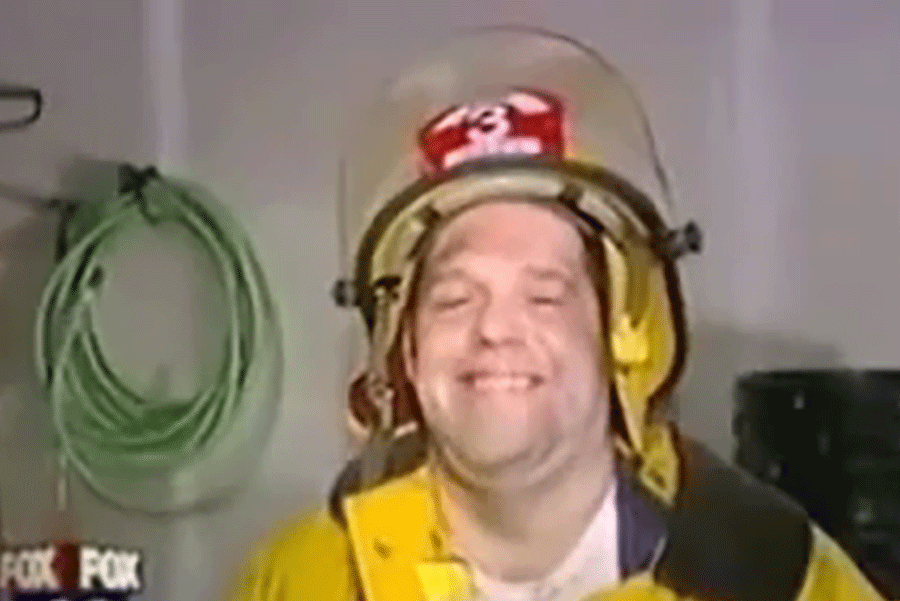Chad Gilmore knows what happens when weed burns. As a founding professor at Oaksterdam University in Oakland, where students major in different aspects of the cannabis industry, Gilmore is considered a horticulture and concentrate expert. Specifically, Gilmore creates curriculum for “extracts” and “methods of ingestion,” meaning he’s an expert in breaking down marijuana plants and using chemistry to determine the best ways to extract their active ingredients.
A Northern Californian himself, Gilmore has been closely following the fires in Santa Rosa and their aftermath. In addition to displacing thousands of residents, the fires damaged a sizable portion of weed plants in one triad of the legendary Emerald Triangle, essentially the supply chain for medical marijuana all over California—as well as the farms that will fill the demand for weed under the state’s adult-use marijuana law, which goes into action in January.
While locals look to rebuild their communities after the devastating consequences of the fires, members of the MEL staff couldn’t help but ask one silly question: What happens when weed burns?
Basically, we wanted to know if the firefighters in NorCal were getting hella contact high.
Gilmore weighed in on this and other weed-industry-related fire concerns earlier this week.

Do all of these burning cannabis crops mean there’s going to be a massive contact high?
Through a process called decarboxylation, any time marijuana is under fire, it creates the ability for people to receive the vapor and get a contact high from it. Cannabis starts to vaporize at 280 degrees, and at 350 degrees, that vapor begins creating a psychoactive response for people. The fires are usually burning in a range of 1,000 to 2,000 degrees. From what’s burned, 65 percent or more is going to be pure carbon and dust, but up to 15 to 20 percent is vapor that’s a psychoactive, what a lot of people would call smoke, and it does allow people to get a contact high.
So, the super-high temperatures don’t eliminate the chance for there to be any psychoactive effect?
No, even at at the 1,000- to 2,000-degree mark, that vapor would exist, especially this close to harvest season. You might even say that a fireman standing next to a fire for a short period of time without a gas mask could possibly receive some of that high, not that they’re all getting completely stoned, but there is the possibility of that happening that’s certainly scientific. Other factors matter, too — for example, how far downwind you are and how much of the smoke you’re breathing in. Although you’ve got to remember, 65 percent or more of that is certainly black tar and resin. That’s the dirty part that’s bad for our lungs, and anybody standing downwind from a fire at that point could receive some of those elements as well.
You mentioned harvest season. Why is October a particularly bad time for such a fire to happen in terms of the weed industry?
People begin growing anywhere from April to June. They put at least six months of effort and preparation into their garden. The fires started right before harvest season. These growers aren’t only losing their harvest to sell, but also losing all the money they put into a whole year’s worth of work. The farmers themselves aren’t able to recuperate the expenses that they’ve been putting out to prepare the soil, prepare the land and maintain the general operation. Unlike vineyards or other comparable crops, marijuana fields don’t qualify for federal insurance, so none of this was protected.
Do you think it would be possible for any damaged weed to be used for concentrates or similar extractions? Or would it be too dangerous with all the carbon and smoke?
If there was a marijuana farm that was close to the fire but didn’t get burned down, the terpene profile of the plants, which accounts for their smell, taste and the flavonoid profiles, is still going to be somewhat damaged. There are ways to take that cannabis through the extraction process, during which you could take out the terpene profile and the flavonoid profile. But that would only be true for areas that didn’t get hot enough for the weed to vaporize, meaning the plants would have to stay under 280 degrees so that their oil didn’t literally boil off.
Will these growers have to replace their soil, too?
Yeah. When a fire burns at 1,500 or 2,000 degrees, it destroys the plants all the way down into the roots and soil. So all that soil needs to be replaced.
You mentioned all the tar created by ignited weed in the fire. What about in an individual hit from a glass pipe or joint? What’s the tar level like there?
About 65 percent of that vapor is tar. The medicinal intake is as low as 4 percent and as high as 28 to 29 percent with a joint. The level of tar that you’re getting is the level of carbon that’s actually burned. But you can change the burning temperatures you’re working with. When you’re vaporizing at a temperature less than 480 degrees, the carbon level in what you’re inhaling goes down. If your vaporization process stays in that 350 to 400 degree range, you’re actually getting 90 to 95 percent cannabis vapor with very little carbon.

